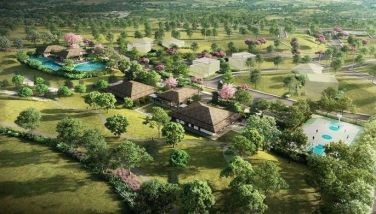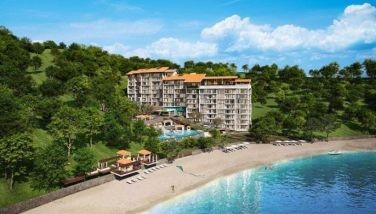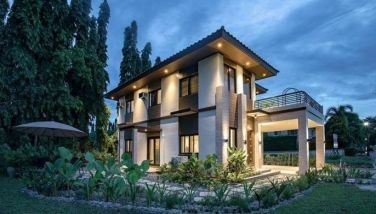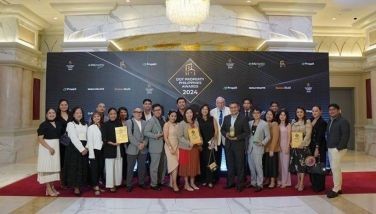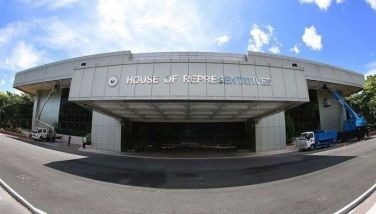New technology benefits plywood, particleboard industries
October 4, 2003 | 12:00am
LOS BAÑOS, Laguna – The local plywood and particleboard industries stand to benefit considerably from a technology developed by a government agency here.
The technology entails the utilization of waste plastics as binder for plywood and particleboard.
It was developed by researchers of the Department of Science and Technology-Forest Products Research and Development Institute (DOST-FPRDI) headed by Director Florence Soriano. The researchers are Hilario Dolores, Mildred Fidel, Vicente Mallari Jr., Alberto Nicolas, Nathaniel Ramos, and Antonio Centeno.
The research was funded by the DOST-Philippine Council for Industry and Energy Research and Development (PCIERD), a sister-center of FPRDI.
Results of the study were presented at the 16th STARRDEC Regional Symposium on R&D Highlights held here recently. STARRDEC stands for Southern Tagalog Agriculture and Resources Research and Development Consortium, one of the 14 government regional consortia coordinated by the DOST-Philippine Council for Agriculture, Forestry and Natural Resources Research and Development (PCARRD).
The environment-friendly technology utilizes mixtures such as the low, medium, and high density polyethylene (LMHPE) waste plastics, oriented polypropylene laminates (OPL), and waste plastic aluminum packaging laminates (PAPL) as binder in the production of laboratory and commercial-sized three-ply plywood and one-layer particleboard.
FPRDI explained that plastic can be melted at 120 to 150 degrees Celsius during hot pressing. No toxic substances in the form of polychlorinated biphenyls (PCBs) and dioxins can be traced during hot pressing because these poisonois substances can be formed when plastics are burned or incinerated at a temperature of more than 360oC.
Formaldehyde (an irritating gas) emission can be eliminated using the technology.
"Waste plastic-bonded pluwood (Types 1 or exterior plywood and 2 or interior plywood) passed the product quality evaluating testing following the PNS 16:1992 plywood standards," the FPRDI researchers reported.
They added: "High veneer moisture content (18 percent) is tolerable during hot pressing. No steam blister defects were noted which are common in hot pressing of veneers with an MC of more than 12 percent."
The researchers estimated that initial investment cost of a waste plastic plant that produces five-millimeter, three-ply plywood using waste plastics as binder is P7.42 million.
The technology entails the utilization of waste plastics as binder for plywood and particleboard.
It was developed by researchers of the Department of Science and Technology-Forest Products Research and Development Institute (DOST-FPRDI) headed by Director Florence Soriano. The researchers are Hilario Dolores, Mildred Fidel, Vicente Mallari Jr., Alberto Nicolas, Nathaniel Ramos, and Antonio Centeno.
The research was funded by the DOST-Philippine Council for Industry and Energy Research and Development (PCIERD), a sister-center of FPRDI.
Results of the study were presented at the 16th STARRDEC Regional Symposium on R&D Highlights held here recently. STARRDEC stands for Southern Tagalog Agriculture and Resources Research and Development Consortium, one of the 14 government regional consortia coordinated by the DOST-Philippine Council for Agriculture, Forestry and Natural Resources Research and Development (PCARRD).
The environment-friendly technology utilizes mixtures such as the low, medium, and high density polyethylene (LMHPE) waste plastics, oriented polypropylene laminates (OPL), and waste plastic aluminum packaging laminates (PAPL) as binder in the production of laboratory and commercial-sized three-ply plywood and one-layer particleboard.
FPRDI explained that plastic can be melted at 120 to 150 degrees Celsius during hot pressing. No toxic substances in the form of polychlorinated biphenyls (PCBs) and dioxins can be traced during hot pressing because these poisonois substances can be formed when plastics are burned or incinerated at a temperature of more than 360oC.
Formaldehyde (an irritating gas) emission can be eliminated using the technology.
"Waste plastic-bonded pluwood (Types 1 or exterior plywood and 2 or interior plywood) passed the product quality evaluating testing following the PNS 16:1992 plywood standards," the FPRDI researchers reported.
They added: "High veneer moisture content (18 percent) is tolerable during hot pressing. No steam blister defects were noted which are common in hot pressing of veneers with an MC of more than 12 percent."
The researchers estimated that initial investment cost of a waste plastic plant that produces five-millimeter, three-ply plywood using waste plastics as binder is P7.42 million.
BrandSpace Articles
<
>
- Latest
Latest
Latest
October 23, 2024 - 9:30am
By May Dedicatoria | October 23, 2024 - 9:30am
October 11, 2024 - 3:45pm
October 11, 2024 - 3:45pm
October 10, 2024 - 11:30am
October 10, 2024 - 11:30am
October 5, 2024 - 12:08pm
October 5, 2024 - 12:08pm
September 24, 2024 - 1:00pm
September 24, 2024 - 1:00pm
September 13, 2024 - 4:00pm
September 13, 2024 - 4:00pm
Recommended



















